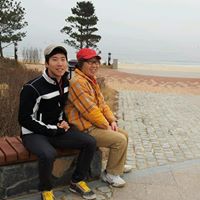Joon Phill Cho
age ~69
from Hopatcong, NJ
- Also known as:
-
- Joon P Cho
- Joonphil P Cho
- Joan P Cho
- Jooh P Cho
- L Cho
- Phill Cho L
- Cho L
Joon Cho Phones & Addresses
- Hopatcong, NJ
- 5 Millstone Dr, Livingston, NJ 07039 • (973)4623929
- 33 Ridge Rd, Livingston, NJ 07039
- Bronx, NY
- West Orange, NJ
- Highland Park, NJ
Work
-
Company:Weil, Gotshal & Manges LLP
-
Address:
Lawyers & Attorneys
Name / Title
Company / Classification
Phones & Addresses
President
Heath Egdon Inc
Whol Men's Leather Silk & Linen Jackets Pants & Shirts
Whol Men's Leather Silk & Linen Jackets Pants & Shirts
87 Burlews Ct, Hackensack, NJ 07601
(201)6781770
(201)6781770
Director
Industrial Bank of Korea
National Commercial Bank
National Commercial Bank
1250 Broadway, New York, NY 10001
(212)2686363
(212)2686363
Principal
Hanmaek Corp
Business Services at Non-Commercial Site
Business Services at Non-Commercial Site
33 N Rdg Rd, Livingston, NJ 07039
J B MECK INT'L CORP
34 W 33 St 7, New York, NY 10001
34 W 33 St, New York, NY 10001
34 W 33 St, New York, NY 10001
HAN MAEK CORPORATION
Nonclassifiable Establishments
Nonclassifiable Establishments
105 W Kingsbridge Rd, Bronx, NY 10468
5 Millstone Dr, Livingston, NJ 07039
5 Millstone Dr, Livingston, NJ 07039
Us Patents
-
Antireflective Compositions And Methods Of Using Same
view source -
US Patent:20110200938, Aug 18, 2011
-
Filed:Feb 18, 2010
-
Appl. No.:12/708205
-
Inventors:Huirong Yao - Plainsboro NJ, US
Guanyang Lin - Whitehouse Station NJ, US
Jianhui Shan - Pennington NJ, US
Joon Yeon Cho - Bridgewater NJ, US
Salem K. Mullen - Florham Park NJ, US -
International Classification:G03F 7/004
G03F 7/20 -
US Classification:4302801, 4302701, 430324
-
Abstract:A novel antireflective coating composition is provided, said antireflective coating composition comprising a) a compound of formula 1, b) a thermal acid generator, (c) at least one polymer,wherein Uand Uare independently a C-Calkylene group; V is selected from a C-Calkylene, arylene and aromatic alkylene; W is selected from H, C-Calkyl, aryl, alkylaryl and V—OH; Y is selected from H, W, and UC(O)OW, wherein Uis independently a C-Calkylene group, and m is 1 to 10. Also provided are methods using said compositions as antireflective coatings for substrates in lithographic processes.
-
Antireflective Coating Composition And Process Thereof
view source -
US Patent:20120251943, Oct 4, 2012
-
Filed:Mar 30, 2011
-
Appl. No.:13/075749
-
Inventors:M. Dalil Rahman - Flemington NJ, US
Douglas McKenzie - Easton PA, US
Jianhui Shan - Pennington NJ, US
Joon Yeon Cho - Bridgewater NJ, US
Salem K. Mullen - Florham Park NJ, US -
International Classification:G03F 7/20
G03F 7/004
C09K 3/00 -
US Classification:4302701, 252582, 430311
-
Abstract:The invention relates to an antireflective coating composition comprising a crosslinker and a crosslinkable polymer capable of being crosslinked by the crosslinker, where the crosslinkable polymer comprises a unit represented by structure (1):where A is a fused aromatic ring, B has a structure (2), and C is a hydroxybiphenyl of structure (3)where Ris C-Calkyl and Ris C-Calkyl.The invention further relates to a process for forming an image using the composition.
-
Bottom Antireflective Coating Compositions
view source -
US Patent:20100092894, Apr 15, 2010
-
Filed:Oct 14, 2008
-
Appl. No.:12/250563
-
Inventors:Weihong Liu - Bridgewater NJ, US
Guanyang Lin - Whitehouse Station NJ, US
Joon Yeon Cho - Bridgewater NJ, US
Jian Yin - Bridgewater NJ, US
Salem K. Mullen - Florham Park NJ, US
Mark Neisser - Whitehouse Station NJ, US -
International Classification:G03F 7/20
C07D 251/32
C09D 5/00 -
US Classification:430325, 544192, 10628721
-
Abstract:Antireflective coating compositions are discussed.
-
Probabilistic Signal Shaping Using Multiple Codebooks
view source -
US Patent:20200280468, Sep 3, 2020
-
Filed:Feb 28, 2019
-
Appl. No.:16/288719
-
Inventors:- Espoo, FI
Joon Ho Cho - Holmdel NJ, US -
Assignee:Nokia Solutions and Networks OY - Espoo
-
International Classification:H04L 25/03
H04B 10/00
H04B 14/00
H04B 7/0456
H04L 1/00
H04B 14/02 -
Abstract:A communication system in which multiple shaping codes are selectively and iteratively used to encode a data frame such that possible energy inefficiencies associated with the use of constant-probability codes and/or transmission of dummy constellation symbols can be relatively small. In an example embodiment, the used shaping codes have different respective code rates, and a code selector of the shaping encoder operates to select one of the shaping codes by adaptively matching the rate of the code to the effective rate needed to efficiently encode the unprocessed portion of the data frame. The encoding is carried out in a manner that enables the shaping decoder to unequivocally determine the shaping codes that have been used for encoding each particular data frame based on the same rate-matching criteria as those used by the shaping encoder. At least some embodiments advantageously lend themselves to being implemented using circuits of relatively low complexity.
-
Low-Complexity Constellation Shaping
view source -
US Patent:20180026725, Jan 25, 2018
-
Filed:Jul 20, 2016
-
Appl. No.:15/215013
-
Inventors:- Murray Hill NJ, US
Joon Ho Cho - Holmdel NJ, US -
Assignee:Alcatel-Lucent USA Inc. - Murray Hill NJ
-
International Classification:H04B 10/564
H04L 1/00 -
Abstract:We disclose a transmitter that uses at least first and second fixed constellations in which the same bit-words are assigned to different respective constellation symbols of different respective transmit energies. The transmitter generates an outgoing data frame by first generating two data frames using the first and second constellations, respectively, and then selecting the one of the two data frames that has the lower overall transmit energy and discarding the other. The first and second constellations are constructed in a manner that enables the transmitter to realize a significant shaping gain. Some embodiments of the transmitter are compatible with the use of forward-error-correction coding and provide a shaping gain for the transmission of both information and parity bits. An example embodiment of the transmitter can advantageously be implemented with relatively low complexity by employing constellation mappers and demappers that operate using relatively small look-up tables.
-
Construction Of Structured Ldpc Convolutional Codes
view source -
US Patent:20160173132, Jun 16, 2016
-
Filed:Dec 10, 2014
-
Appl. No.:14/565480
-
Inventors:- Murray Hill NJ, US
Joon Ho Cho - Holmdel NJ, US -
International Classification:H03M 13/11
H03M 13/00 -
Abstract:Protograph construction methods for generating convolutional LDPC code matrices are disclosed in which multi-equation problems of girth maximization are reduced or replaced using other techniques including (with limitation): finding base matrices with a unique set of non-repeating distance parameters, finding the minimum largest such distance parameter among solution-set matrices, and quasi-cyclic lifting of the generated convolutional LDPC code matrix. 4-cycles and select (avoidable) 6-cycles are thereby removed from the resulting convolutional LDPC code matrix, thereby resulting in significant performance gains.
Resumes

Joon Cho
view source
Student At School Of Visual Arts
view sourceLocation:
Greater New York City Area
Industry:
Graphic Design

Joon Cho
view sourceLocation:
United States
Youtube
Myspace
Plaxo

Joon Cho
view sourceDattner Architects
Flickr

Joon Ki Cho
view source
Joon Won Cho
view source
Joon Hwa Cho
view source
Joon Hee Cho
view source
Joon Jr Cho
view source
Joon Cho
view source
Joon Hyong Cho
view source
Joon Joebomb Cho
view sourceGoogleplus

Joon Cho
Education:
Drexel University

Joon Cho

Joon Cho

Joon Cho

Joon Cho

Joon Cho

Joon Cho

Joon Cho
Classmates

Joon Hyong Cho
view sourceSchools:
Zoller Elementary School Schenectady NY 1996-1997
Community:
David Albue

Joon Rae Cho
view sourceSchools:
Hannah Middle School East Lansing MI 1989-1993
Community:
Michael Fay, Tom Sparrow

Joon Min Cho, Rosedale Sc...
view source
Mesa Robles Elementary Sc...
view sourceGraduates:
Stephanie Hester (1980-1984),
Ken Gentry (1966-1978),
Joon Cho (1980-1984)
Ken Gentry (1966-1978),
Joon Cho (1980-1984)

University of Washington ...
view sourceGraduates:
Nicole Coyne (2000-2000),
Joon Cho (1995-1996),
Jennifer Lam (2007-2009),
Ole Thompson (1986-1992)
Joon Cho (1995-1996),
Jennifer Lam (2007-2009),
Ole Thompson (1986-1992)

univ minnesota, Minneapol...
view sourceGraduates:
Krishnamurthy Krishnamurthy (1989-1993),
Tan Dao (1979-1983),
joon Cho (1997-2001)
Tan Dao (1979-1983),
joon Cho (1997-2001)

Suffolk University - Law,...
view sourceGraduates:
Jack Speranza (1990-1994),
James Smith (1998-1999),
Joon Cho (1995-1999),
Cynthia Paolillo (1998-2001),
Craig Martin (1980-1983)
James Smith (1998-1999),
Joon Cho (1995-1999),
Cynthia Paolillo (1998-2001),
Craig Martin (1980-1983)

University of Southern Ca...
view sourceGraduates:
Richard Schwadron (1998-2002),
Joon Cho (1990-1994),
Peter Carr (1960-1962),
Brian Little (1986-1991),
Ching Wei (1989-1993)
Joon Cho (1990-1994),
Peter Carr (1960-1962),
Brian Little (1986-1991),
Ching Wei (1989-1993)
Get Report for Joon Phill Cho from Hopatcong, NJ, age ~69



![[AKC2020] YGF Opening speech (2nd Day): Prof. Nam ... [AKC2020] YGF Opening speech (2nd Day): Prof. Nam ...](https://i.ytimg.com/vi/IaBnskOT0v4/hq720.jpg?sqp=-oaymwEcCNAFEJQDSFXyq4qpAw4IARUAAIhCGAFwAcABBg==&rs=AOn4CLA0IHE8-P5WKiA0FiwYyG2N-QR0gA)
![[SKY Castle | Ep.17 - 4/9] Cha Ki Joon - Cho Byeon... [SKY Castle | Ep.17 - 4/9] Cha Ki Joon - Cho Byeon...](https://i.ytimg.com/vi/fTAfywqqOco/hqdefault.jpg?sqp=-oaymwEcCOADEI4CSFXyq4qpAw4IARUAAIhCGAFwAcABBg==&rs=AOn4CLAwsUpjHdeIcv1bTeUhi1o3eS-eMQ)
![[SKY Castle | Ep.19 - 1/13] Cha Ki Joon - Cho Byeo... [SKY Castle | Ep.19 - 1/13] Cha Ki Joon - Cho Byeo...](https://i.ytimg.com/vi/LBX1rl-Hgdw/hqdefault.jpg?sqp=-oaymwEcCOADEI4CSFXyq4qpAw4IARUAAIhCGAFwAcABBg==&rs=AOn4CLBM5wjSVpXlsyP2lQZMesieU_ewzg)







